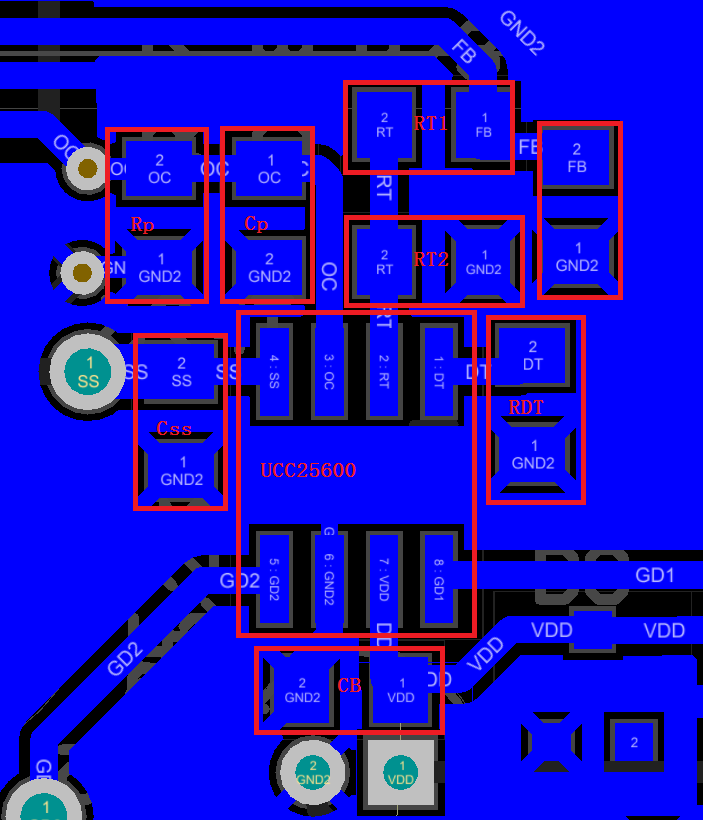SLUS846C September 2008 – June 2015 UCC25600
PRODUCTION DATA.
10 Layout
10.1 Layout Guidelines
Four-layer layout is recommended
A 1-µF ceramic decoupling capacitor is recommended, to be placed as close as possible between the VCC terminal and GND, and tracked directly to both terminals.
Place CSS, RDT, Rp, Cp, RT1, and RT2 as close as possible to the UCC25600.
Connect a regulated bias supply to the VCC pin.
10.2 Layout Example
 Figure 27. Board Layout Example
Figure 27. Board Layout Example